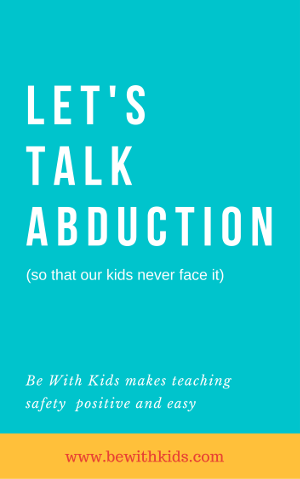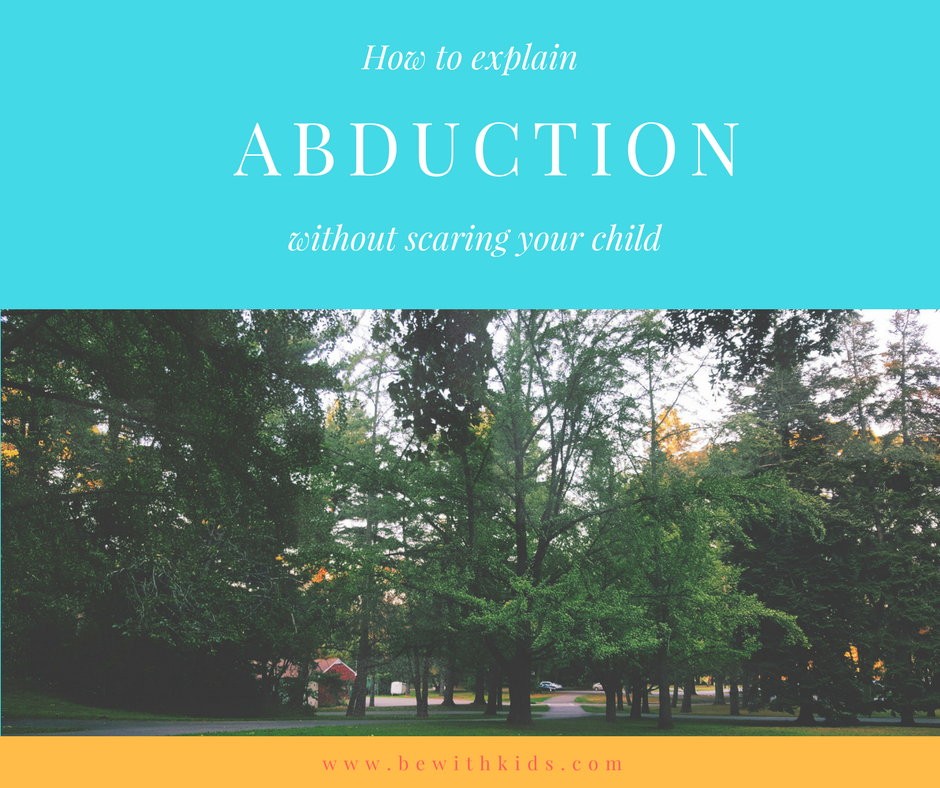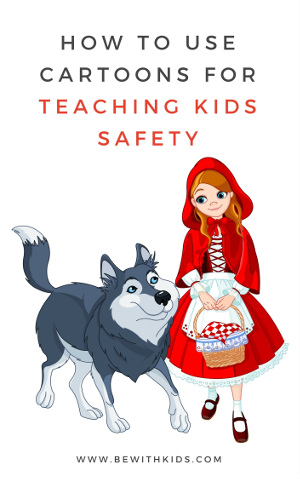How to explain abduction without scaring your child

Teach safety rules early
My 4-year-old broke a safety rule that I did not teach him. Yet.
How can I explain abduction the way he could understand?
We were ready to go home after a family day in a park.
Kids were riding bikes. It was getting late.
Cars were leaving the parking lot.
My phone rang:
- “Is he with you?” my husband asked.
- “Yes, he is.”
- “I mean, are BOTH KIDS with you?”
- “What do you mean by BOTH? Dill is here, Tek was with you!” I tried to keep calm. Dill looked up at my shivering hands.
- “I. Don't. See. Tek. He was riding his bike.” My husband was out of breath from running.
We ran to the parking lot, yelling and checking everything.
We checked bathrooms, playgrounds, tennis courts, trails, fields, pavilions – everywhere.
He wasn’t there.
The cars were leaving the parking lot one by one.
- “Should I call the police now, or should we make one more round running?” - one scary thought ran after another.
- What if he’s in trouble? What if I never see him again?”

This is what happened
My phone rang again:
- “He’s here. I found him!” – I could barely hear my husband’s voice.
I let out the breath I’d been holding, and the tears dropped on my cheeks.
Every parent had a scary moment like this.
When your child runs off in an unknown direction with a new friend, rides his bike way too far, hides in a store, or walks away without paying attention, and he gets lost.
And it gets even worse when you have teenagers.
Why did it happen?
When we all calm down a bit, I asked
- “How did you get here?”
- “I saw a squirrel and ran after it. I thought you went to the parking lot,” he said.
Oh boy, he was going too fast.
He went in the wrong direction to the WRONG parking lot.
He's got lost.
Who knew it could have happened.
Keep in mind, we were not letting kids ride around the park unsupervised.
He managed to get lost between a couple of trees and a playground.
A couple. Of feet. From. Us. Under. Our. Watch.
- “Why didn’t you tell us where you were going?”
I asked and kicked myself.
It was my fault - I hadn’t taught him this rule yet.
Do not repeat this mistake - your child may get into bigger trouble before you even think of it.
Two big safety mistake parents make with young kids
I thought that a 4-year-old was way too young to be required to share his plans before leaving.
How wrong I was.
Mistake #1:
I didn't teach safety rules early enough.
Mistake #2:
I didn't know how to explain it in an age-appropriate way without scaring him.
How to explain abduction to young kids
Keep in mind, abduction worries you more than your kids.
Little kids can sense your fear and anxiety, so you need to be well prepared to explain it in an empowering way when you teach this topic.
We can put the message for the little kids this way:
"This happens. People who do that make money this way. They take a child and ask for money. It's illegal. You need to know the rules on how to keep yourself safe".
That's more than enough foundation for the first explanation.
How to explain abduction in details without introducing fear
Keep in mind that abduction by strangers is less common than those committed by people that kids knew or "kinda" knew (sometimes without their parents knowing).
In many cases, abducted kids were "groomed" by a predator beforehand and left their home voluntarily or under the pressure of shame, guilt, or fear and did not dare to tell their parents.
It does happen in families with good relationships too - predators are good in psychology and manipulation.
Your connection with your child is his best defense.
Related article: Why stranger danger is not working and what to do instead.
Practice: books, cartoons, and stories
Many classic fairy tales were designed to teach safety.
Not all of them are still relevant or useful, but some are good.
This is an example of how I used a Gingerbread man story:
“I can run away from you. I can. Run, run as fast as you can. You can't catch me. I'm the gingerbread man!” -
- “Do you see the gingerbread man?” – I asked my son.
- “Yes.”
- “Anything wrong happened to him?”
- “Yes. He ran away from home, and the fox ate him.”
- “Here is the lesson: if you’re going to leave, you tell me about it before you go, okay? So that if you need help, I’m around.”
- “Okay.”
How you can use it
The following stories can be used to explain the topic of abduction and the situations where kids were kept somewhere forcefully:
Little Red Riding Hood, Aladdin, Thumbelina, and Rapunzel.
You can use either books or cartoons.
For example, the Little Red Riding Hood broke three major safety rules:
- She changed the route to her grandma house without checking with her mom first
- She left with the stranger
- She disclosed her plans and the location of her grandma’s house to a stranger
+ She didn't listen to her intuition about the weird look of the grandma.
Please scroll down to download the complete guide on teaching safety with the stories, books, and cartoons that I made for you.
It not as scary to talk about abduction, predators, and safety mistakes when it happens to a character in a book.
Your kids will understand and remember safety rules better through the story they can relate to.
Teach your child abduction safety rules
We did the work for you!
Sign up below to receive a swipe copy for the instructions, examples, and conversation scripts:
Download your copy
"Explain abduction in a non-scary way using stories, books, and cartoons"
↓↓↓↓↓↓

Algorithm for four stories:
- Little Red Riding Hood
- Thumbelina
- Rapunzel
- Aladdin
Topics:
- Abduction
- Following safety rules
- The consequences of breaking them
Learn how to use any story, cartoon, or life situation for teaching safety.
Explain this super sensitive topic in a delicate, neutral way without feeling scared or scaring your child.
Well, instead of dreading teaching this subject,
I am now looking forward to starting it. - Liz T, mom
How to use everyday situations to teach kids safety
- Learn kids’ safety rules yourself
- Sign up for a free mini-course and learn how to use everyday situations to teach safety
- Sign up for the full course and let kids practice the skills and experience the drills in a positive, hands-on way.
You don’t need to fake any situations.
You’ll learn to use your everyday life by just paying attention, including stories, games, books, movies, and cartoons you already know.
Do you want your child to be safe with people?
Do you want a road map to safety?
Do you want your child to be safe when you are not around?
In situations you have never discussed?
Enroll in a Free online course for parents of kids 3-10 years old
"Teach Your Child Safety With Strangers (and other people)"
↓↓↓↓↓↓

Do you want:
- Your child to be safe with strangers and other people around him?
- Learn safety skills positively and practically?
- Be prepared and worry you less?
Join this free class and go from fear to confidence.
When your child breaks a safety rule he didn’t know, it may be too late to teach the rule.
Don't wait until it's too late. Our kids are the most precious of what we have - protect them.
↑↑↑↑↑↑↑
Take action
Great job so far - safety is a challenging subject!
Please sign up above to see the next steps.
↑↑↑↑↑↑↑
Can't find what you are looking for?
Please tell me what you are looking for and how I can help.
I'll be in touch.
Or try using the 

